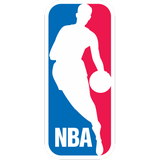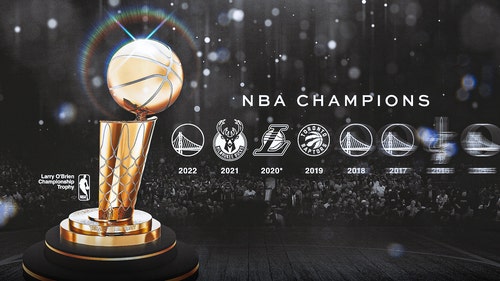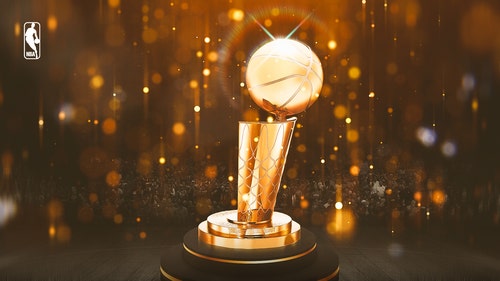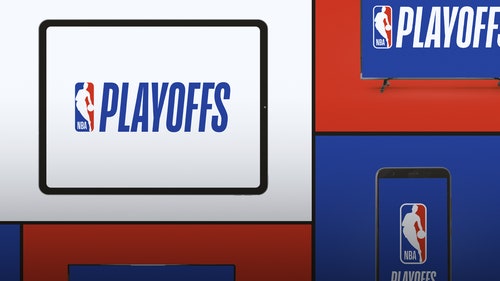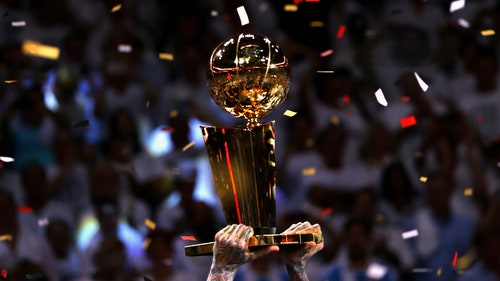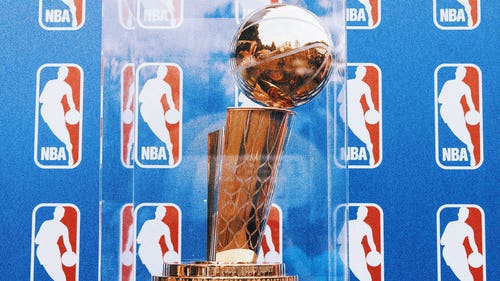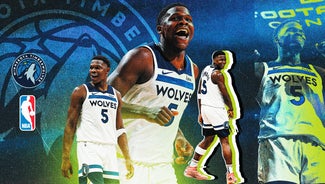
3 points: Chet Holmgren's ascension, James Harden's screen-setting and Scoot Henderson's biggest concern
We've now crossed the halfway point of the NBA season, meaning the samples are large enough for us to believe what we are seeing is real.
So, with that in mind, this week's 3 Points takes a look at two rookies having very different seasons and one veteran adapting to a new role.
1. The skill that separates Chet from the rest
It turns out that Chet Holmgren may have been the final piece for the Oklahoma City Thunder. He's averaging 16.7 points per game, shooting 37.4% from deep on 4.1 attempts and swatting 2.6 shots per game. His rim protection has transformed the Thunder's defense; they're fourth in points allowed per possession, after finishing 13th last season; Joel Embiid, Kristaps Porzingis and Scottie Barnes are the only other players in the league who are averaging 1.5 or more blocks per game and also shooting at least 35% from deep (Brook Lopez, at 34.6%, is on the cusp).
If Holmgren was simply a quintessential floor-spacing, rim-protecting big man, the Thunder would still be in great shape. But what separates Holmgren from other pick-and-pop artists like Pozingis and Lopez is that, not-even midway through his rookie season, he's already proficient at creating and finishing off the bounce.
Holmgren is driving to the basket 6.5 times per game, according to Second Spectrum tracking data. Jaren Jackson Jr., Karl-Anthony Towns, Embiid and Alperen Sengun are the only bigs attacking the hoop more frequently. Despite being 7-foot-1, Holmgren has a tight handle and nimble feet. He's not just a straight-line attacker, either, nor is he an out-of-control freight train barreling his way to the rim. He's finished 59.4% of his shots off drives, the league's fourth-best mark among players attacking the hoop six or more times per game, and is passing out of drives 38% of the time, a rate in line with maestros like Luka Dončić and Shai Gilgeous-Alexander.
Holmgren's complete offensive game stretches opposing defenses past their breaking point. Try stashing a wing on him, though, and Holmgren can just attack and finish over the top. Put a big man on him and the paint is wide open, which the Thunder are more than happy to exploit. Not only does no team drive as much as the Thunder, but the gap between them and the No. 2 Indiana Pacers is equal to the gap between the Pacers and the No. 15 Cleveland Cavaliers.
And good luck trying to slow the Holmgren pick-and-pops. With most sweet-shooting bigs, opposing defenders can find some success by chasing them off the 3-point line, knowing that guys like Porzingis and Lopez aren't threats off the dribble. With Holmgren, there is no answer. Just look at this back-to-back sequence from November against the Minnesota Timberwolves, owners of the league's top defense.
On this first play, Rudy Gobert sells out to take away the jumper. One pump fake and dribble later, Holmgren's in the paint.
A minute later, the Thunder run a similar action. This time Gobert is cautious with his close out. Chet takes advantage of the space and buries the triple.
This is impressive stuff, especially when you consider that Holmgren is just 21 years old. Because Victor Wembanyama is basically as good as advertised, Holmgren might not end up walking away with this season's Rookie of the Year award. Unlike Wembanyama, though, Holmgren is going to spend April and May torturing opposing defenses.
2. The one thing James Harden isn't doing
James Harden and the LA Clippers are making everyone who criticized the early season trade look foolish.
The Clippers are 30-15 overall — putting them in striking distance of the Western Conference's No. 1 seed — and 27-8 over their last 35 games. They've outscored opponents by 13.2 points per 100 possessions with Harden, Kawhi Leonard and Paul George on the floor (the only more effective high-minute threesomes have been Nikola Jokic, Jamal Murray and Michael Porter Jr. in Denver; Anthony Edwards, Rudy Gobert and Mike Conley in Minnesota; and Joel Embiid, Tyrese Maxey and Tobias Harris in Philadelphia).
Harden has injected the Clippers with a verve they were lacking. His downhill drives and cross-court passes have added another dimension to their isolation-heavy attack. And, to echo a previous quote of his, he's clearly trying to be part of their offensive system as opposed to the system. The 2.1 catch-and-shoot 3s he's launching per game are the most he's attempted since 2017.
But one thing he should be looking to do more is screen for others. Because he's now teammates with two dominant scorers in Kawhi and Paul George, Harden is playing off the ball more than he has since leaving Oklahoma City back in 2012. Most teams don't have enough high-level wing defenders to cover all three when they share the court. This often leaves a weaker or smaller defender on Harden —which is exactly the sort of matchup he and the Clippers should be looking to exploit by dragging into a screen.
Harden, however, is only setting 1.2 on-ball screens per 100 possessions, despite the Clippers scoring 1.18 points per possession on these actions, an elite mark (these numbers come via Second Spectrum). He's somehow setting fewer on-ball screens than he did last season (2.1 per 100 possessions) when he was the primary ball-handler in Philadelphia.
Harden's not going to morph into a screen-and-dive expert like Bruce Brown or Terrence Mann, but having him pick for Leonard is a good way to create mismatches and force opposing guards into uncomfortable situations. He did this a few times last week when the Los Angeles Lakers slotted Austin Reaves onto him. Harden was able to pull Reaves into the play and create switches, allowing Leonard to isolate on the smaller and slower Reaves. This is a great crunch time set and something the Clippers should spend the season's second half working on.
3. A worrisome Scoot Henderson trend
First, let's get all the caveats out of the way first. Scoot Henderson is only 20 years old (at least he turns 20 on Feb. 3). And you never want to jump to conclusions on rookies. And there are plenty of examples of players who struggled in the first half of their first season and wound up having excellent careers.
Now that we've got all that clear, we can say the following: Thus far this season, Scoot Henderson has been the league's most disappointing rookie. The numbers are, well, not good. The 12.2 points he's averaging in 26.4 minutes per game are fine, but he's getting those points on an ugly 37% shooting and leading the league in turnovers per 100 possessions. His defense, especially off-the-ball, has been putrid.
What's most alarming, though, is how much he's struggled with the length and athleticism of the NBA. After all, his strength and athleticism were supposed to be his greatest attributes. They were the primary reason the Blazers were thrilled to grab him with the draft's third pick.
An example: Henderson has converted just 45% of his attempts at the rim, one of the worst marks in the league. Part of this is because he's playing on a bad offensive team (29th out of 30 in points per possession) with limited spacing. That won't always be the case. Also, it's fair to assume that as his jumper improves, the floor will open up for him. But just because we're not writing Henderson off doesn't mean we can't be worried about his inability to make a layup.
Yaron Weitzman is an NBA writer for FOX Sports and the author of Tanking to the Top: The Philadelphia 76ers and the Most Audacious Process in the History of Professional Sports. Follow him on Twitter @YaronWeitzman.
